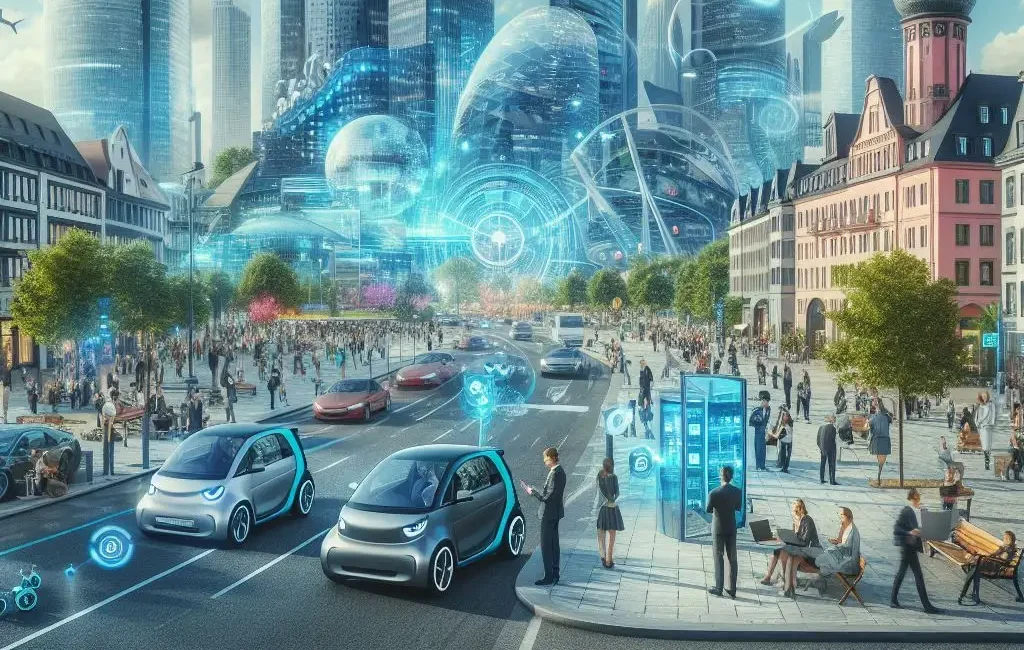
In June 2025, NVIDIA declared the development of what it terms the globe’s inaugural industrial AI cloud, situated in Germany and specially designed to expedite advanced manufacturing applications for Europe’s foremost automotive producers, including BMW Group and Mercedes-Benz.
Why Germany? A Strategic Center for Autonomous AI Infrastructure
Germany’s robust manufacturing ecosystem renders it an ideal location for NVIDIA’s ambitious project. The initiative was announced at the GTC Paris conference (part of VivaTech) by CEO Jensen Huang, who highlighted the necessity for “AI factories”—establishments focused not on car production but on generating the intelligence that drives them.
Simultaneously, Deutsche Telekom disclosed its commitment to manage the data center infrastructure, overseeing operations, data security, sales, and AI solutions, with an anticipated completion by 2026.
Vast Scale: 10,000 GPUs and State‑of‑the‑Art Technology
The German AI cloud will implement 10,000 NVIDIA GPUs, powered by NVIDIA DGX B200 systems and RTX PRO servers, and utilize NVIDIA’s CUDA-X libraries, RTX workloads, and the Omniverse platform—all in accordance with the NVIDIA Omniverse Blueprint for industrial applications.
This hardware infrastructure is crafted to provide immense computational power—sufficient for tasks across design, engineering, simulation, logistics, robotics, and digital twin generation, enabling European manufacturers to execute accelerated industrial applications on a large scale.
BMW: From Factory-scale Digital Twins to Aerodynamics Simulation
BMW Group is utilizing the infrastructure to create factory-scale digital twins of its production sites through NVIDIA Omniverse. These digital models permit global planning teams to collaborate in real time, enhance factory layouts, and validate autonomous robot and vision AI processes before implementation on the actual shop floor.
Furthermore, BMW—in collaboration with Siemens—has hastened aerodynamics simulations using Grace Blackwell GPU systems and CUDA-X-accelerated Simcenter Star-CCM+, realizing performance enhancements of approximately 30× compared to traditional CPU-based approaches. This capability increases simulation accuracy while decreasing energy usage and costs.
Mercedes-Benz: Virtual Assembly Line Configuration with Omniverse
Mercedes-Benz is harnessing the AI cloud to revolutionize its factory planning methods. By utilizing Omniverse-powered virtual design tools, Mercedes strategizes and optimizes factory assembly lines in simulations, minimizing downtime and boosting operational efficiency before any physical alterations take place.
These digital processes promote less disruptive and more effective ramp-ups across Mercedes’s global facilities.
Wider Ecosystem: Software and Industrial Collaborators
The AI cloud is integrated into a larger European industrial AI ecosystem, connecting with leading software companies:
Ansys: Integrates Omniverse into its Fluent fluid simulation and AVxcelerate sensor products.
Cadence: Merges CUDA-X and NVIDIA Blackwell chips into its Millennium supercomputing platform.
Siemens: Enhances its collaboration with NVIDIA across automation, software, and AI-enhanced industrial systems.
Consequently, manufacturers like Schaeffler are already implementing AI-driven automation in over 100 plants. Volvo Cars executed Ansys Fluent on NVIDIA GPUs and achieved 2.5× faster fluid simulation capabilities utilizing Blackwell architecture as opposed to more than 2,000 CPU cores with similar financial hardware.
Democratizing Access: Amplifying Europe’s AI Capability
In his keynote address in Paris, Jensen Huang vowed to amplify Europe’s AI computing capacity tenfold in the next two years, deploying 20 AI factories across seven European nations, including Germany, France, Italy, Spain, the UK, Finland, and the UK.
He positioned AI as the “greatest equalizer” underscoring European independence through sovereign AI infrastructure—systems that operate within the continent, adhere to data governance tenets, and lessen reliance on international cloud providers.
Impacts, Challenges, and Future Timeline
The AI cloud is planned to be fully ready by 2026, based on the agreement between NVIDIA and Deutsche Telekom.
Possible effects include:
– Much quicker simulation processes, like BMW achieving 30 times faster results and Volvo 2.
5 times faster,
– Lower energy and computing costs,
– Faster time to set up new manufacturing improvements and automated systems,
– Better planning and testing of digital models before making physical products.
But there are still some difficulties:
– The money needed for starting up and running this system is huge,
– European laws on AI, like the EU’s AI Act, need to support innovation while making sure things are ethical,
– Managing data ownership and connecting with old industrial systems has to be done carefully.
Why This Matters for BMW and Mercedes-Benz
For BMW, the AI cloud opens up new ways to work together across factories worldwide, build digital models of systems, and test designs more efficiently.
The faster simulation speeds allow for more detailed testing of car designs and systems, with quicker updates.
For Mercedes-Benz, using Omniverse in virtual planning helps cut costs and reduce delays in designing production lines.
This makes it easier to change setups across different factories and improves how quickly they can adapt.
Both car companies will benefit from quicker development, stronger manufacturing systems, and cheaper simulation and setup.
This puts them in a strong position to lead in the future of smart, AI-powered manufacturing.
Conclusion
NVIDIA’s new industrial AI cloud in Germany, developed together with Deutsche Telekom, is a big step for AI independence in Europe and for changing how industries work.
With 10,000 top-of-the-line GPUs, digital twins powered by Omniverse, and close teamwork with top car makers like BMW and Mercedes-Benz, it brings AI-driven simulation at a massive scale.
This project could be a model for future AI factories, changing how carmakers design, test, and operate their manufacturing processes.
It makes Europe’s car industry more efficient, faster, and more independent in the fast-changing world of AI.
By mid-2026, these tools are expected to be available, marking a big step toward AI-led, digital manufacturing in Europe’s heart.